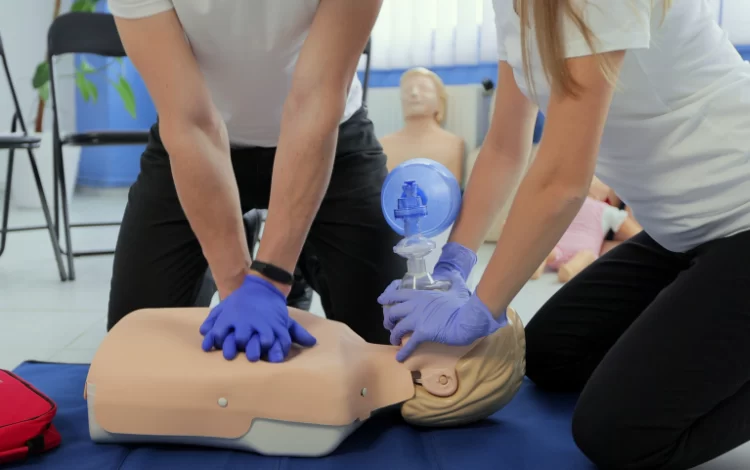Special Circumstances and Modifications for CPR

CPR protocols must sometimes be modified to address special circumstances or specific workplace environments. These modifications may involve adjustments to standard techniques while maintaining the core principles of effective resuscitation. Understanding when and how to modify standard protocols enables responders to provide effective care across a range of situations.
Environmental considerations often necessitate modifications to standard CPR techniques. Wet conditions, common in some workplace settings, require additional attention to responder safety and modified approaches to victim assessment and care. Similarly, confined spaces may limit the ability to maintain ideal positioning for CPR delivery, requiring adaptations while maintaining effective compressions and ventilations.
The presence of workplace hazards may require integration of personal protective equipment into the CPR response. Chemical exposures, biological hazards, or other workplace-specific risks may necessitate the use of protective gear while providing care. Training must address proper donning and doffing of such equipment while minimizing delays in care delivery.
Modifications for specific victim conditions require careful consideration. Pregnant victims, for instance, require slight adjustments to hand position and may benefit from left lateral positioning when possible. Similarly, victims with known or suspected trauma require additional precautions during airway management and positioning.
Pediatric and infant CPR modifications reflect the unique anatomical and physiological characteristics of younger victims. These modifications include adjustments to compression depth, hand position, and compression-to-ventilation ratios. Understanding these differences enables workplace responders to provide appropriate care across all age groups.
The assessment approach for pediatric and infant victims emphasizes the recognition of respiratory emergencies as primary causes of cardiac arrest in these age groups. Initial actions focus on airway assessment and rescue breathing, reflecting the different pathophysiology of pediatric cardiac arrest compared to adult events.
Compression technique modifications for pediatric and infant victims include changes to hand position and compression depth. For example, a one-hand technique may be appropriate for small children, while two-finger compressions are standard for infants. These modifications optimize compression effectiveness while minimizing the risk of injury to the victim.
The emotional aspects of responding to pediatric emergencies warrant special attention in workplace response planning. The psychological impact on responders may be significant, requiring additional support and debriefing following such events. Training should address these aspects while providing strategies for maintaining effective care delivery.
Common Complications and Solutions
The recognition and management of common CPR complications enables responders to deliver more effective care while minimizing potential adverse effects. Understanding these complications helps providers maintain high-quality CPR while adapting to challenging situations that may arise during resuscitation attempts.
For instance, gastric inflation represents a common complication of rescue breathing, particularly when excessive ventilation force or volume is used. This complication can compromise ventilation effectiveness and increase the risk of aspiration. The proper technique and attention to ventilation delivery help minimize this risk while maintaining sufficient oxygenation.
Rib fractures during chest compressions occur frequently, particularly in elderly victims. While concerning to providers, this complication should not deter the delivery of effective compressions. Training must address this possibility while emphasizing the priority of maintaining high-quality CPR despite such complications





